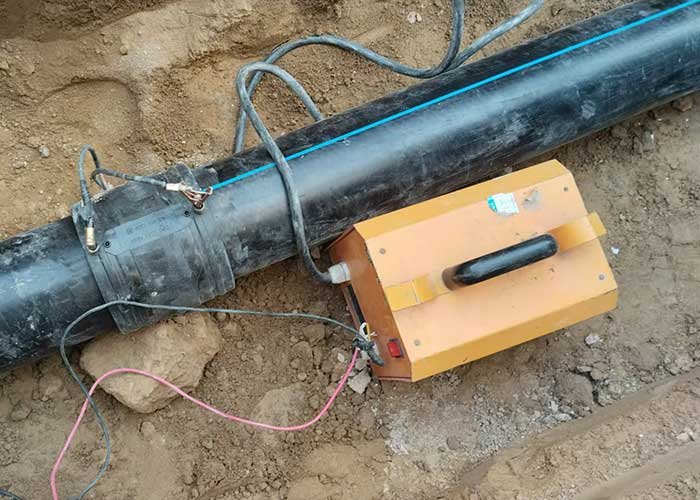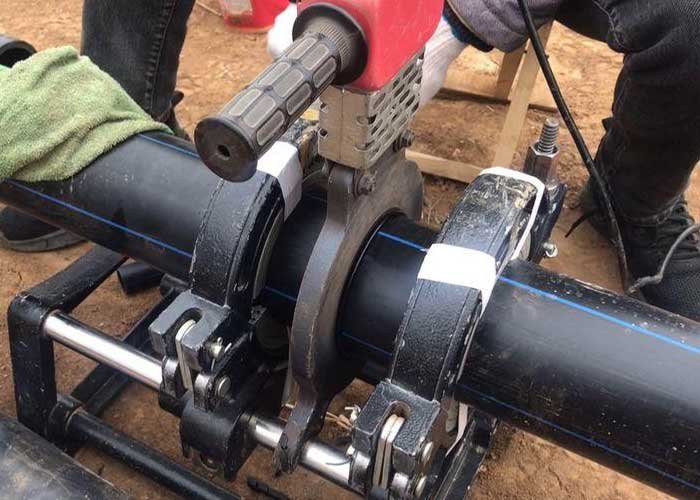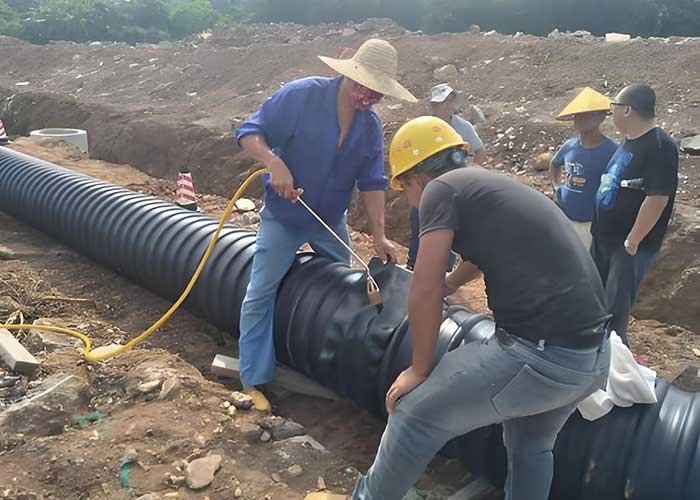Os tubos são essenciais para instalações de tubulação industrial. O PE (polietileno) é amplamente usado na fabricação de tubos de água devido à sua alta resistência, resistência à corrosão e propriedades não tóxicas. Os tubos de PE são resistentes à ferrugem, o que os torna uma alternativa ideal aos tubos de água de ferro comuns.
Os métodos mais comuns de conexão de tubos PE usados na instalação de tubulações são hot melt, fusão elétrica, juntas de encaixe e flanges. Hoje, exploraremos o uso de dois dos métodos de conexão mais usados: fusão elétrica e hot melt.

Fusão elétrica
A fusão elétrica usa o calor gerado pela eletricidade para derreter os tubos de conexão. O material de conexão é colocado entre eletrodos. A corrente é passada por um fio de resistência no tubo, gerando calor. Esse calor aumenta a temperatura interna do material até seu ponto de fusão, fundindo o tubo e o encaixe, completando a conexão de fusão elétrica.
Conexões de cola quente
As conexões de hot-melt são categorizadas em hot-melt de soquete e espigão e hot-melt de topo. Ambas utilizam aquecedores para aquecer os elementos de aquecimento montados em ambas as extremidades (geralmente, os elementos de aquecimento são projetados para corresponder ao diâmetro do cano ou tubo que está sendo fundido a quente). Depois que os elementos de aquecimento são aquecidos, o cano ou tubo é trazido para perto dos elementos de aquecimento e derretido. Após um período de fusão, o cano ou tubo é removido. O cano ou tubo é então unido e, após o resfriamento natural sob pressão aplicada, a conexão de fusão a quente é concluída.

Conexão de soquete hot melt
As conexões de soquete termofusível são comumente usadas em tubos de pequeno diâmetro DN63, e o diâmetro máximo é geralmente DN110. Como é necessária força externa para pressurizar os tubos durante o acoplamento de tubos, o diâmetro dos tubos que podem ser conectados é limitado. Da mesma forma, como é necessária uma força externa durante o processo de instalação do acoplamento de tubos, é difícil garantir o nivelamento geral dos tubos após a conexão. Além disso, durante o teste de pressão, é fácil que o material derretido vaze das conexões de tubos termofusíveis pelas lacunas dos tubos, afetando a aparência dos tubos acabados. Ao mesmo tempo, o material derretido pode grudar no interior do tubo, fazendo com que o diâmetro interno do tubo fique menor, afetando o fluxo de água. No entanto, devido à sua construção simples e a uma ampla gama de cenários de uso, ele tem sido amplamente utilizado na instalação de tubos de pequeno diâmetro.
Aplicação de fusão de topo
A fusão de topo é usada principalmente para tubos de PE de diâmetro maior. Os diâmetros convencionais dos tubos são, em geral, DN75 e superiores. Os tubos de fusão a quente normalmente têm paredes mais espessas, tornando os acessórios praticamente desnecessários. Durante o processo de fusão de topo, uma máquina de solda é usada para fundir os tubos, que são montados em uma estrutura. Após a fusão, a estrutura é pressurizada e a fusão de topo é concluída com resfriamento natural. Como o processo de fusão a quente deve ser realizado em uma estrutura e devido a vários fatores, como o tamanho maior, as paredes mais espessas e o peso maior dos tubos que estão sendo fundidos, a fusão de topo por fusão a quente é mais complexa. A limpeza e o aperto preliminares dos tubos exigem um tempo significativo, tornando todo o processo trabalhoso e demorado. No entanto, devido às suas vantagens de consumo reduzido de material (sem necessidade de acessórios), conexões seguras e alta estabilidade, ela também ganhou ampla aplicação para unir tubos de grande diâmetro.

Aplicações de conexão por fusão elétrica
As conexões de eletrofusão são usadas principalmente para tubos maiores que DN50. É necessário equipamento especializado para conectar essas conexões. O local exige uma fonte de alimentação básica e, como as conexões de eletrofusão contêm fios de aquecimento internos, os custos de instalação são relativamente altos. No entanto, devido aos requisitos mínimos de instalação, à alta resistência da conexão e às excelentes propriedades de vedação, elas também são amplamente usadas em instalações de tubulações com espaço limitado e em alguns reparos de tubulações subterrâneas.
Conclusão
Os métodos de união de tubos de PE por fusão elétrica e fusão a quente estão bem estabelecidos atualmente. Cada método, juntamente com seus custos e mão de obra associados, tem suas próprias vantagens e desvantagens. Uma solução de união específica deve ser avaliada e implementada com base na aplicação real. Essa abordagem pode ajudar a reduzir os custos e, ao mesmo tempo, garantir a qualidade do projeto.